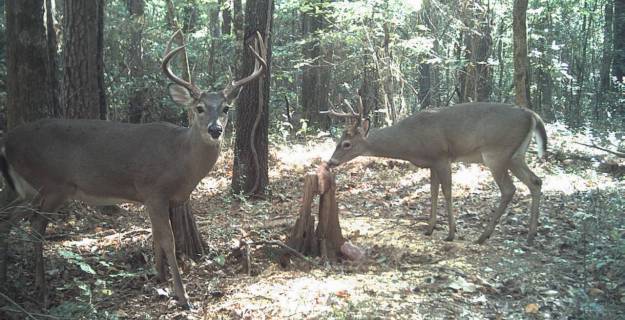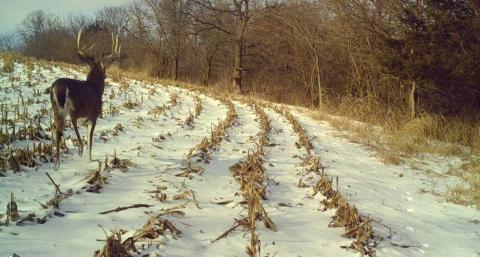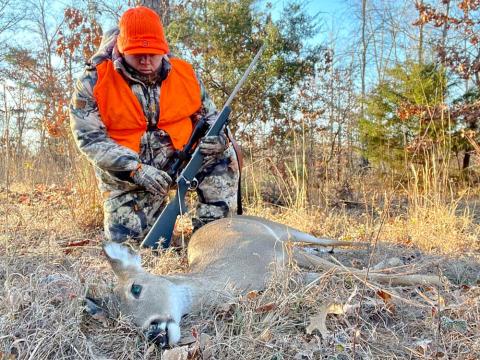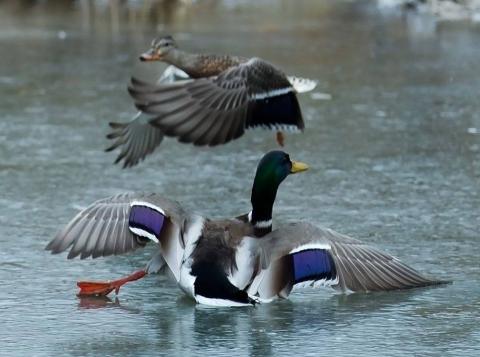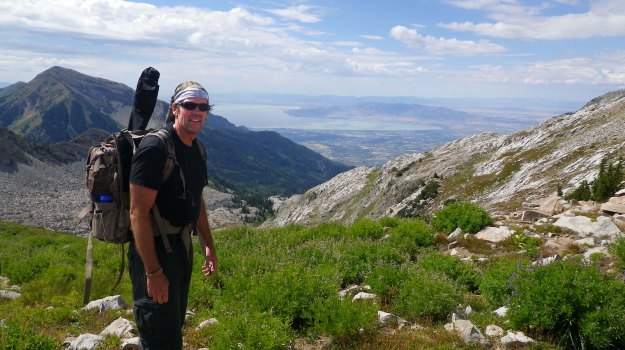
Editor’s Note: Karl Badger of Salt Lake City, Utah, is Mossy Oak’s Big Game Regional Pro Staff Manager for the western states. He primarily hunts and guides for elks, mule deer, antelope and bighorn sheep. He hunts with both a Browning 7mm and a PSE Vendetta. His favorite Mossy Oak camo pattern for western hunting is Mossy Oak Brush, but that may change depending on the season. Badger says, “In the fall, our area has a lot of native grasses and sage, and most of the leaves have fallen off the trees. So, from the waist up, you may be in brown grass that looks just like Mossy Oak Brush. If you’re hunting in the mountains, this pattern also blends in with the rocks and terrain there.”
Hunting bighorn sheep is one of my favorites, because of where I have to go and the terrain I traverse just to see bighorn sheep. In the southern sections of Utah, New Mexico and Arizona, you can hunt desert sheep, but my favorite hunts are still the bighorn sheep. I’ll go as a guide or a wrangler, or help an outfitter, just to get into that country, and the mountains where the bighorn sheep live. One of the biggest concentrations of bighorn sheep right now is in Wyoming, up near the Yellowstone Park area. Sheep hunting is a wilderness experience. You usually must make a pack trip on horseback or mule just to get to the place to start your hunt. Then, you’ll ride to your hunting site, tie-up your animals and begin to climb the mountains. Being able to see the world from the top of a mountain is really inspiring.
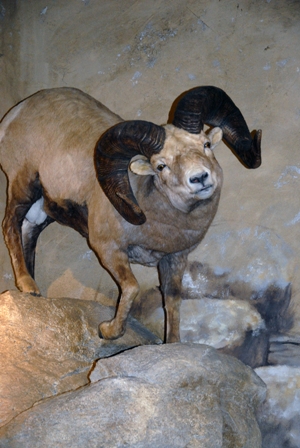 In my last successful sheep hunt, we were hunting in an area called the “Thorofare” in Wyoming, one of the deepest wilderness areas in Grand Teton National Park. A good friend of mine, Jim Moulton of Dubois, Wyoming, had drawn a sheep tag. I went with him to help set-up camp, look for sheep and help get his sheep out of the mountains if he was successful. We rode our horses as high into the mountains as we could and then had to climb about a mile. When I looked off the side of the mountain, I saw a little speck of white far down below us and realized it was our tent camp. I really felt I was close to the moon. We actually were at altitudes of 11,500 or 11,700 feet above sea level.
In my last successful sheep hunt, we were hunting in an area called the “Thorofare” in Wyoming, one of the deepest wilderness areas in Grand Teton National Park. A good friend of mine, Jim Moulton of Dubois, Wyoming, had drawn a sheep tag. I went with him to help set-up camp, look for sheep and help get his sheep out of the mountains if he was successful. We rode our horses as high into the mountains as we could and then had to climb about a mile. When I looked off the side of the mountain, I saw a little speck of white far down below us and realized it was our tent camp. I really felt I was close to the moon. We actually were at altitudes of 11,500 or 11,700 feet above sea level.
On this particular day, we knew we’d have to leave the mountain soon, because sundown was approaching. Suddenly, we saw a small band of sheep with a nice ram walking across a snow-packed field. Jim had to make about a 400-yard shot, and he knocked his sheep down. When we got to the ram, we quickly field-dressed him and started down the mountain. We reached our horses after dark and had a long ride back to camp. We planned to take our pack mules with us the next morning to pack-out the meat and the head of the ram. This area is known for grizzly bears, so we were anxious to get back to the ram and bring him down the mountain before the bears found him. We left camp well before daylight and took the pack animals as far as we could go. There were no trees to tie the horses to, so we put hobbles around the horses’ feet.
We got to the ram and put the meat and horns on our frame packs. Just before we put our packs on our backs and started to go down the mountain, I looked back at our horses and saw they were bunching up. As I watched, somehow those horses managed to come off the mountain and walk all the way back to camp. Our plan had been to carry the meat and the head about 1/2-mile to the horses and mules. When we arrived at the spot where we’d left our mules and horses, we left our meat there, chased our horses until we finally caught up with them, rode them back up the mountain, packed-up the ram and finally got back to camp late in the afternoon. I don’t believe I ever will forget that hunt.
Click the links to see Karl Badger talk about Preparing for Horseback Riding on a Western Hunt and What Boots to Wear on a Western Hunt.
Day 3: Why ProStaffer Karl Badger Chases Antelope and Hunts in the West
Tomorrow: The Greatest Thrill in Life, a Rocky Mountain Elk Hunt
















